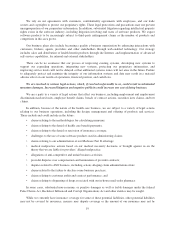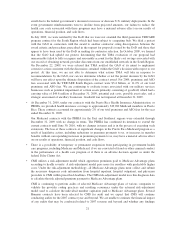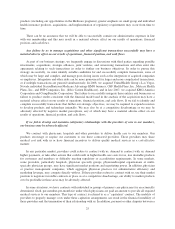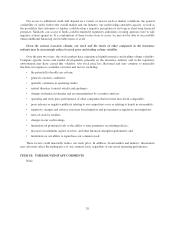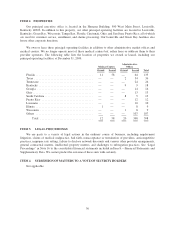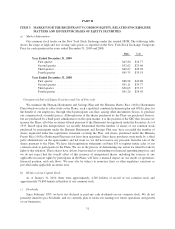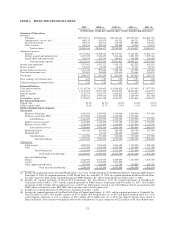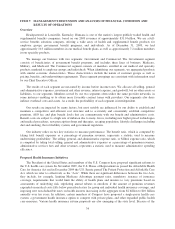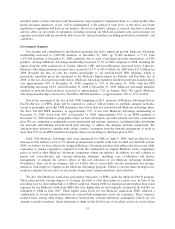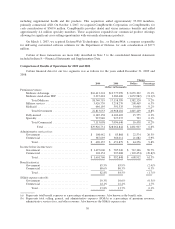Humana 2009 Annual Report Download - page 39
Download and view the complete annual report
Please find page 39 of the 2009 Humana annual report below. You can navigate through the pages in the report by either clicking on the pages listed below, or by using the keyword search tool below to find specific information within the annual report.Our access to additional credit will depend on a variety of factors such as market conditions, the general
availability of credit, both to the overall market and our industry, our credit ratings and debt capacity, as well as
the possibility that customers or lenders could develop a negative perception of our long or short-term financial
prospects. Similarly, our access to funds could be limited if regulatory authorities or rating agencies were to take
negative actions against us. If a combination of these factors were to occur, we may not be able to successfully
obtain additional financing on favorable terms or at all.
Given the current economic climate, our stock and the stocks of other companies in the insurance
industry may be increasingly subject to stock price and trading volume volatility.
Over the past two years, the stock markets have experienced significant price and trading volume volatility.
Company-specific issues and market developments generally in the insurance industry and in the regulatory
environment may have caused this volatility. Our stock price has fluctuated and may continue to materially
fluctuate in response to a number of events and factors, including:
• the potential for health care reform;
• general economic conditions;
• quarterly variations in operating results;
• natural disasters, terrorist attacks and epidemics;
• changes in financial estimates and recommendations by securities analysts;
• operating and stock price performance of other companies that investors may deem comparable;
• press releases or negative publicity relating to our competitors or us or relating to trends in our markets;
• regulatory changes and adverse outcomes from litigation and government or regulatory investigations;
• sales of stock by insiders;
• changes in our credit ratings;
• limitations on premium levels or the ability to raise premiums on existing policies;
• increases in minimum capital, reserves, and other financial strength requirements; and
• limitations on our ability to repurchase our common stock.
These factors could materially reduce our stock price. In addition, broad market and industry fluctuations
may adversely affect the trading price of our common stock, regardless of our actual operating performance.
ITEM 1B. UNRESOLVED STAFF COMMENTS
None.
29


